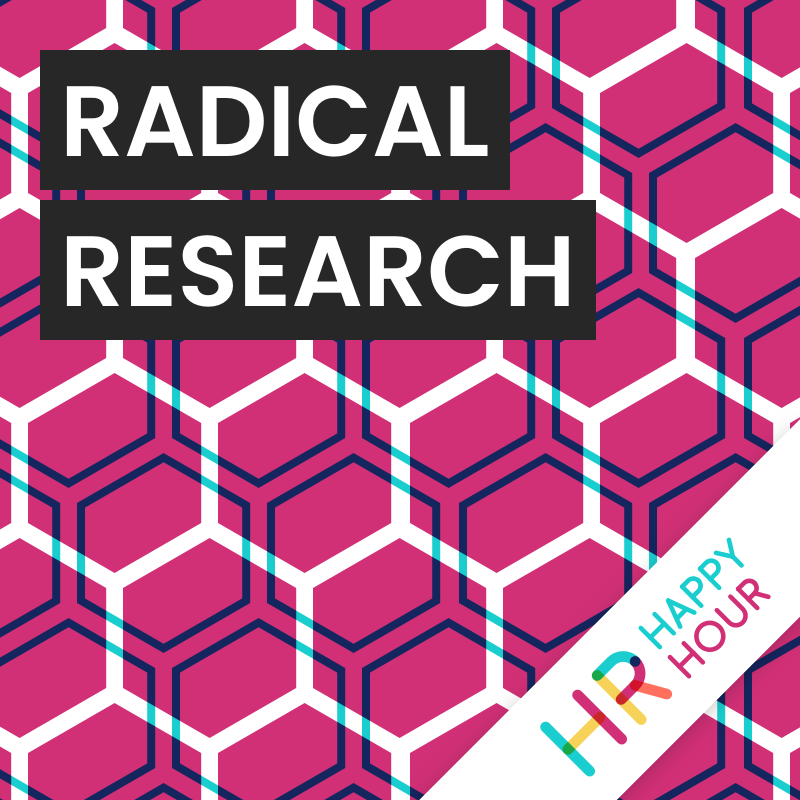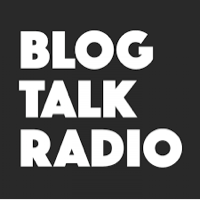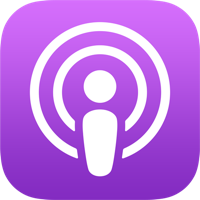Radical Research 12 – Highlights of the Current Labor Market
About this episode
Highlights of the Current Labor Market
Host: Madeline Laurano
Guest: Andrew Flowers, Labor Economist, Appcast
In this episode of Radical Research, Madeline Laurano interviews Andrew Flowers, Labor Economist at Appcast, to discuss the jobs report, state of hiring, and layoffs. Andrew answers the tough questions about the possibility of a recession and even, discusses all the VC money pouring into HRTech. This podcast will help you navigate all of the noise around the economy, make you feel empowered, and highlight this red hot labor market!
Thank you for listening to the HR Happy Hour Network and Radical Research!
Transcript follows:
Madeline 0:00
Hi, everyone. Welcome to another episode of Radical Research. My name is Madeline Laurano. I’m your host. I’m the founder of a company called Aptitude Research and I’m thrilled to be here today with Andrew Flowers, who is the labor economist at Appcast, and a true expert in our economy and what’s happening in talent acquisition and HR. So Andrew, thank you so much for joining me today.
Andrew Flowers 0:24
Madeline, thank you for having me. It’s a pleasure to be here.
Madeline 0:29
Awesome. Well, you have been you’ve been with Appcast for a few years now. You started Recruit Omics, which if anyone is interested in what’s happening in the economy, if you’re interested in how that impacts jobs and your world within HR or TA follow Andrew, he has a huge following on Twitter at Andrew Flowers, and you can follow Appcast and recruit omics. They share so much information, it’s definitely my go to source. So, Andrew, you’ve worked at the Federal Reserve, you’ve worked at Indeed, you’ve been an economist for many, many years, you know, things that most of us have no idea what what any of this means. So can you tell me a little bit about how you became a labor economist? How does how does somebody go about becoming a labor economist?
Andrew Flowers 1:14
Yeah, I went to college and studied economics and started this journey where, as you mentioned, I worked at the Federal Reserve during the Great Recession, and the subsequent move into the kind of job tech world working at Indeed, and now Appcast. I started this journey by studying economics. And that really was an interest because of real life experience. So I grew up in a working class family, I was the oldest of five kids. And we had a great loving family, but it was very financially unstable. So for example, we moved more than 20 times across five states before I graduated high school. So I saw my parents go through two bankruptcies, a foreclosure, several near evictions. So just the economic instability that my family experienced during my childhood was one of the reasons that I knew, you know, going through high school and realizing I liked studying math, I like studying history that, hey, economics could be something for me in terms of connecting those real life experiences to the world of markets to the world of government policy.
Andrew Flowers 2:26
So when I went to college, I went to the University of Chicago, and I studied economics there. And when I graduated in 2008, and got a job. Luckily, at the Federal Reserve Bank of Atlanta, I moved from Chicago to Atlanta. And that really started my journey in professional economic analysis, tracking the macro economy, things like jobs and inflation in the housing market that really interested me, I love the number side of it, of course, the statistical analysis side of it, but I really love and this is, this is key, I believe, the communication side of it. That’s why I think it’s so important to be a clear writer and speaker if you’re going to be a public facing economist. So that’s been my kind of personal career journey. And the core of it, like I said, is this connection to economics, not as just abstract numbers and theories, but as like, economics is the real world, right? It’s it’s people’s lives and their livelihood?
Madeline 3:24
I love that. I mean, it impacts every single part of our lives, like our professional and personal lives. For me, I took lots of economics classes in college and grad school, and I didn’t understand anything, like I feel like I took so many of these, I should be this expert, I didn’t understand, like, the concepts were kind of way above my head. You know, so many books that I read, to try to kind of keep up with this. But what I love about seeing you present, and you know, seeing what you’ve done with our past is you make it so that everyone understands it, like when you’re presenting and like I want to talk about inflation, I want to talk about what’s happening in the economy. And it’s really hard to do, I think, for most people is to understand what all of this means. It’s scary stuff. And we have so many different news sources coming at us that it’s really hard to make sense of what’s important and what we should be ignoring. So I’m hoping we can talk through some of that today. Absolutely.
Madeline 3:24
There’s a lot of noise and a lot of confusion. But there’s also signal and I hope, throughout our work, my team, we helped provide some of that signal some of that value.
Madeline 4:33
So it’s interesting because the jobs report for July was so positive, and you can you call it a perfect time you wrote this great blog. And there’s so much news around it right. We saw 500,000 jobs added unemployment at 3.5% growth in every industry like I you know, even retail and some of these industries where we didn’t expect to see any growth we saw growth. And now August happened and we the jobs report came out last Last week, and it was like a little bit overload, I felt like it was overlooked like July was this big news story. And then August was still seemed pretty positive, like unemployment 3.7%. So not much change. But it was just sort of ignored. I feel like it was ignored is what is this August jobs report mean? Is this good? Is this bad? You know, what does this mean to you?
Andrew Flowers 5:23
Yeah, there’s definitely something to what you just said, maybe it’s the fact that the August report came out the Friday before Labor Day. And so I think people were kind of starting to check out. But going back to July, that was a real surprise to see over half a million jobs added. And so when the report for August came out, just before Labor Day and showed 315,000 jobs, and a slight uptick in the unemployment rate, maybe some folks would, on the surface, kind of shrug that off as a kind of just so so report. But the more we dig into the numbers, frankly, the better the August jobs report looks. And now why is that just to give listeners some perspective, if you just track the basic growth of the US labor force in terms of demographic change year over a year, the number of jobs the US economy needs to add each month just to keep the unemployment rate stable, is like 100 to 150,000 jobs a month, right? That’s the kind of expected amount of job growth if it goes below that, or, or you know, if there’s actually a negative job loss on a month, and that’s bad, right for the economy. So if 150,000 is roughly the break even point, the fact that August, we saw 315,000 jobs get added, that’s still really strong number one, even if it’s a step down from July.
Andrew Flowers 6:46
But when you dig into the numbers, the fact that the unemployment rate rose slightly, this is gonna sound counterintuitive, but it actually rose for a good reason. And the reason is, the unemployment rate is not just people who don’t have a job, it’s people who don’t have a job and who are actively searching for a job as a share of this, this denominator, this kind of pool of people called the labor force. And the in the reported August showed that the labor force grew a lot, which, if you are a recruiter, if you work in talent acquisition and in HR, you know, that the last two years have been really challenging, right, because both competitors are trying to hire workers. And because the unemployment rates really low, and people who want jobs are getting them and it’s hard to poach workers. And the fact that you see in August a growth in the labor force, that there was an increase of over 700,000 people who are now actively searching for a job that weren’t in July, that’s, that’s a good sign. So even though it makes the unemployment rate tick up a bit, it’s counter intuitively, it’s a, it’s an increase in the unemployment rate for a good reason. So overall, I would say the, you know, beyond just one month or two months figures just to look kind of over the last six to nine months, the US economy, in terms of the labor market is very strong. It’s it’s still an economy where there’s tons of labor demand, we see job openings or vacancies to fill open positions, at or near record highs over 11 million.
Andrew Flowers 8:15
And just to give you a perspective, that’s like over 50% above the number of job openings before the COVID pandemic. So there’s a huge intent by employers to hire, right that there’s a lot of job openings. wage growth for workers, has been pretty strong. But what are the negatives of this economy over the last six to nine months? Well, two things that are worth mentioning one, the biggest one is inflation, right. So inflation is eroding a lot of these wage gains. And so that makes many workers feel poor. But then the other factor that we’re starting to see is some kind of, I wouldn’t call it recessionary declines and growth, but kind of stalling out and growth. So you probably heard that there were two consecutive quarters of negative GDP growth. And for a lot of people, that’s kind of a shorthand definition of a recession. But the fact is, despite these initial readings of GDP being negative in the first half of 2022, other indicators of the economy, namely the labor market, but also consumer spending, business investment are still really strong. So this one measure of GDP was kind of temporarily affected by things that are kind of anomalous, like international trade or inventories. So the big picture here is, yes, inflation is still a huge challenge. That’s the kind of economic enemy number one, the GDP story about, are we in a recession, we can talk about that. But the story there, I think, is that it’s not that we’re falling down this economy. It’s just that it’s kind of stalling out. The exception, however, is just that the labor market remains read high. It’s maybe cooling off a little bit from like white hot to red hot, but it’s still a very strong labor market.
Madeline 9:53
Yeah. And it’s like, it’s two of these things that I think we all feel right now. It’s like seeing the jobs report and knowing the labor market is red hot. Everyone that we know in talent acquisition or recruiters. They’re still working really hard. They’re still filling positions TA is hot right now. And yet we are seeing all these news stories about layoffs too. I mean, inflation for sure. layoffs, just what’s going on with the economy and everything feels like we’ve got this storm cloud brewing of should be should we be worried that we’re hitting a recession? Now? How do you think like this impacts? Either employers or, or even recruiters are ta teams? Like, should we be operating like we operated last year, which is just go all in higher as we can? Or should we be pulling back and fearful of this inflation? And some of these other indicators? are we hitting this? Are we going to have a recession?
Andrew Flowers 10:55
Yeah, it’s it’s the number one question that I get asked, and I should get asked, and my answer is, so far, no, um, we do see some warning signs, some some red flashing lights, in terms of you’ve probably seen that the stock market earlier this year went through kind of sustained decline, it’s since recovered a bit. You see it in the housing market, which was just too hot, right, it was kind of seen house prices and home sales explode through the pandemic that’s cooled off substantially, there’s been a huge correction in the housing market. But the underlying core drivers of the economy, consumer spending, still quite strong. And then, of course, the labor market, still very strong when we’re adding 300 to 500,000 jobs a month, when we have these, you know, really record high job openings. That’s just not the kind of indicators that point to a recession. Now, what’s the what’s the reason for this fear of a recession? It’s legitimate, it’s definitely a legitimate fear. And the reason is okay, inflation is at a 40 year high, right? We’re used to over the last two or three decades, decades, we’re used to inflation, consumer price inflation rising at a rate of like, two to 3% per year. Well, gosh, we have not seen that, right, led by gasoline prices and food prices. Inflation has been eight 9% or so, year over year, throughout this recent six month period. So inflation is really high. The economy got kind of too strong, in some sense, right? We’re adding too many jobs and we can’t find enough workers. That’s, that’s part of the reason, you know, Tas folks are so stretched thin is that they can’t, you know, find the people to power their organizations. It’s such a challenging market from an employer’s perspective. So the economy got so hot that the Federal Reserve, our nation’s central bank said, whoa, whoa, whoa, let’s kind of tap the brakes a bit, let’s begin to raise short term interest rates steadily but aggressively. And they’ve done that since earlier this year, they’ve been raising interest rates, why? To kind of cool off the economy to tap the brakes. And when you raise interest rates, things like credit card, interest rates or car loans, obviously, mortgage rates are a huge factor, they rise in tandem with those short term interest rate hikes. And that slows consumer spending, it slows business investment, and that’s kind of the intention. The express purpose of the Feds goal here is to kind of cool things off. Now, when we circle back and we talk about specifically recruiters, how do they feel about this in terms of if you’re in the TA space?
Andrew Flowers 13:27
If you if you work in HR? How do you feel about like the outlook for the economy right now? Well, the goal of the fed by raising rates and slowing the economy is to cool off inflation, and specifically in the labor market, to bring down the number of these unfilled job openings. Now, the interesting thing is the Feds goal, if they can accomplish this is to bring down labor demand. In other words to like have companies who have open positions say, Wait a second, let’s take those off the market. Let’s not fill those positions. Let’s just be a little more cautious right now. See how our cells develop over the next few quarters. That’s the Feds goal is to bring down job openings, the Fed doesn’t want layoffs to increase right? It does. It wants to basically cool off inflation by slowing the economy without triggering or without triggering a rise in the unemployment rate without triggering a recession. Now can’t do this can’t pull off this kind of Goldilocks maneuver of like the economy is too hot. Let’s cool it off without like making an ice cold. That’s to be seen whether the Fed can pull this off to kind of manage the economy, but from a recruiters perspective, from a TA HR leaders perspective, pay attention to those job openings to those open vacancies. Yes, you hear about layoffs. What I’ve noticed is there’s lots of attention paid this year to layoffs, but they’re overwhelmingly concentrated in a few kind of growth tech startup companies. The broader kind of labor market isn’t seeing a ton of layoffs. There’s always some natural even in the strongest labor markets. There’s some natural churn, right there’s layoffs. There’s adding jobs, but we’ve been adding 300 to 500,000 jobs a month this year, and the unemployment rates below 4%. So there’s not a ton of layoffs has there been an uptick? There’s been a very slight uptick. You see this with, for example, unemployment insurance claims. So when people get laid off, and they want to go get unemployment benefits, we have seen an uptick in those those claims for unemployment benefits since the spring. So there’s some truth to this, like, you know, Buzzy stories about layoffs at tech companies. But has it affected the broader economy? No, not yet. And if you’re a recruiter, if you’re if you work in TA, the goal of the fed by kind of encouraging the slowdown is to lower the number of unfilled vacancies without increasing layoffs. And we’ll see if that’s going to be the case.
Madeline 15:46
It’s so interesting. I mean, the layoff piece of this is so interesting to me. And it makes sense because if they can lower those open vacancies without triggering all these layoffs, that’s that’s the goal. And yet, when you read any news article right now, you would think that they failed, because layoffs are everywhere. I mean, part of me, I’m a little cynical about some of the layoff stories that have been covered. Because I think part of this is part of tech, like for high growth companies and tech companies, layoffs are part of the situation they’ve taken tons of investment, they’re growing at a pace that they can’t keep up with. And that sometimes needs a little bit of disorganization, and we don’t know what to do with talent, we don’t know what to do with our products, we don’t know what to do with our company. So part of me feels like this is pretty natural and in tech. And then I think the other piece of it this is this has nothing to do with anything that you’ve only studied. But it’s I think the LinkedIn factor right now, where people go to LinkedIn and share their stories has really been interesting, too, because it, you know, it gives another channel to this layoff story. So it feels like if you’re just somebody that’s not following any of this, it feels like everyone’s getting laid off at every company, and your next, and it’s terrifying. But how much of it is really different than what we’ve seen in the past with tech. I mean, to me, this feels like it’s probably always been part of technology.
Andrew Flowers 17:20
And just just like, the last few recessions from before COVID, right, the global financial crisis recession, the great recession from like 2007 to 2009. And then before that, of course, even more apropos, the bursting of the tech bubble in the early 2000s. In both of those cases, yeah. You saw an increase in the unemployment rate, especially so in the Great Recession, a huge uptick. And there were layoffs in tech, in both cases. Why because texts kind of procyclical meaning that kind of its highs are higher than his lows are lower, and in this most recent round of tech layoffs, that kind of, you know, flash and scare people on LinkedIn, I think there’s definitely something to that. What you’re saying. They’re driven by the drying up, frankly, of venture capital funding and venture capital funding has, has enabled some of these big growth tech startups to expand especially during the pandemic, when there was kind of a moment where people thought there’s a kind of permanent structural change in the economy that everyone’s going to permanently you know, just shop through E commerce, not in brick and mortar retail stores, they’re only going to kind of use Zoom and Spotify and other kind of technologies, they’re not going to kind of venture back out. Well as that shifted. And frankly, as consumer spending shifted away from just you know, buying things of goods and buying more services going out as travel increase as restaurant spending increase, that kind of recalibration of sales from those growth tech companies, they realized they kind of over levered themselves. They brought on too much debt they over hired and so they’re re kind of re calibrating they’re, they’re reaching a new equilibrium now, as the venture capital funding dries up, well, first of all, what’s right, what’s the reason behind that? Well, it’s higher interest rates, right? So it’s very easy to you know, hire 1000s of people when you’re effectively borrowing money, you were raising funds from venture capitalists with near rock bottom, near zero interest rates. Now, as interest rates rise, those those venture capital funds kind of start to question their investments, they start to kind of tighten their belt, and then I think is driven a lot of the layoffs in the tech sector, this spring and summer.
Andrew Flowers 19:30
But to zoom out beyond tech to to look at things like manufacturing, for example, the number of manufacturing job openings is more than double where it was before the COVID recession in early 2020. We have more than doubled think, more than double the amount of open positions in manufacturing and professional and business services which is like a big kind of supersector that’s kind of like all kind of white collar position. So like marketing and legal and sales, that is also a 50 60% on down the line warehousing, even brick and mortar retail, there’s just a broad base demand to hire. And so I think, for workers who do get laid off, and again, it’s particularly focused in the tech sector for those who do get laid off, they’re often finding it, it’s pretty easy to find a job. And I’ve heard stories by folks who say, Oh, yeah, I’m kind of glad I got laid off. So I can work in a vacation here for a few weeks before I took another job. And often we see this in the data too, that these jobs switchers are getting higher wage growth. And that’s actually driven a lot of the so called Great resignation is just people quitting for a better offer. And now if they get laid off, just with all the job openings out there, I want to just reassure folks that it’s still a good time to look for a job as a worker as a job seeker. But to work in TA to work in HR right now. It is a shifting macroeconomic environment. It’s not just purely roses. Right, there’s still inflation, there’s still headwinds to the outlook over the next few quarters.
Madeline 20:56
Yeah, it’s such an important point. One thing that I’m just so curious about the the VC piece, because we’ve seen just in our industry, right, so much VC money coming in? I mean, it doesn’t make sense. It doesn’t make sense for the companies that are getting like $100 million dollars of investment there, it doesn’t seem like there, there used to be a rhyme or reason to why this was happening. And doesn’t seem like that’s the case right now at all. Do you see that shifting? Will it have to shift just in general? And will it shift in our HR tech world?
Andrew Flowers 21:27
I would imagine some some big shifts are going to happen over the next few years for two main reasons. And we’ve touched on both of them, right. So one is the higher interest rates, that makes venture capital fundraising more challenging, right, it means that while you could probably still raise money, if you have a good business idea, as a startup, it’s not going to be as prolific where anybody can get a big sack of cash to go hire 1000 folks and start a company that’s going to not be as prevalent as it was in 2021, early 2022. So that’s the first factor, the higher interest rates. But the other factor is, frankly, a big macro force that drives a lot of the TA HR. Recruiting world is like labor demand, right? And so when you look at like this fundamental imbalance, where there’s almost two job openings for every one unemployed person, right, when there’s this desperate problem to be solved by employers, which is, hey, you in recruiting you and HR, go out and find us workers, when that is the kind of macro force driving the industry, then yeah, you’re gonna get funding there, you’re gonna get new innovative ideas. And that’s the kind of healthy innovation you want to see. But like I said, the labor market is cooling off, it’s still very strong, but it’s cooling off from those high highs of 2021. And so going forward over the next year or two, I’m not predicting like a collapse in the job market. But but the analogy I use, think of it like a soccer ball, it’s been depressurized, it was kind of overinflated, and the soccer ball was too tight, and the Fed with higher interest rates and just the the natural course of the economy, we’re trying to deflate it, we’re trying to, we’re trying to depressurize it without a collapse in the job market. So that force, that force of less labor demand going forward, will also I think, naturally, kind of cool off the TA, HR hecticness. There’s been a frenetic pace as you battling documents.
Madeline 23:25
Yeah, it’s crazy. I love that analogy of the soccer ball. Because I think it’s comforting to it doesn’t feel like we’re just going to all of a sudden, deflate this. And it gives some relief to I think ta teams right now that can’t keep up with the hiring demands that they’re getting, or the great resignation, or the quiet quitting or whatever it may be. This kind of takes that pressure and makes it more manageable. So red hots labor market, still a great time to look for a job, still a great time to be an HR TA. And hopefully, with all of this work that the feds doing, we’re going to see some relief on what ta teams have been going through for the past two years. I mean, this is all really, really positive. And yeah, I mean, I feel like this is I feel so much smarter after this conversation. And I have to tell you, I feel like I can go to a dinner party now and know exactly what I’m talking about. So thank you for that. But it feels it feels positive. You know, I feel like this is all very good news.
Andrew Flowers 24:28
I think so too. I think, you know, it’s almost like, going back to that Goldilocks analogy, like a cooling off in the economy is frankly good for recruiters, right? If there’s a slight uptick in unemployment and a drop in job openings, then that ratio of just two to one, job openings to unemployed people is going to decline. And you want it to get back to that kind of one to one ratio, where recruiting is more manageable, where there’s just an equal amount of both open candidates for open positions and that would make Get a lot of TA leaders, a lot of HR leaders lives easier going forward. Now, it’s the Goldilocks metaphor because you don’t want to overcorrect, like in 2009 through 2013, where as we recovered from that great recession, there was just double, triple, quadruple the number of unemployed people for open vacancies that frankly made either recruiting super easy, because there you just had an avalanche of candidates for every open position, or put recruiters out of a job. Because if companies weren’t hiring, if there weren’t that many open positions, then then that’s no good for TA in recruiting either.
Madeline 25:36
Right, right. Very well said. So, as we kind of wrap up here, I just have one last question. Any predictions for the September jobs report? I know it’s early, do you think we’re still going to have over 300,000 jobs added are we going to kind of see that back in the normal range?
Andrew Flowers 25:54
I think we’re gonna start to see a slowdown, like that 150,000 range I mentioned earlier, we’re not going to drop that fast. But I think we’re on a glide path downward to a more reasonable job growth trajectory of like 250,000 or so a month, the half a million jobs a month, that’s just not sustainable, right, because of a number of reasons, it would just kind of overheat the economy. And they’re just frankly, the labor supplies is, especially with immigration restrictions over the last few years, it’s just not there to enable us to grow. And that’s a that’s a kind of broader trend to just demographics. With aging of the baby boomer pop up population, there is going to be in the long run or medium run real labor shortages in certain industry. So I think in the near term, though, and for September going forward, I think the prediction would be a continual kind of step down, but at a healthy rate of job growth. So adding employment of the tutor and 50,000 or so a month, and the key thing to watch is the wage growth, right, we want workers to have good wage growth. But the Fed is concerned of a of a wage price spiral, it’s it’s concerned that as wages get ever higher, that the companies that bear those costs, their labor burden is passed on to consumers in the form of higher prices. And then when consumers have higher prices, they kind of factor that into their wage bargaining and ask for higher pay, and so on, and so forth becomes a doom loop.
Andrew Flowers 27:24
And so that’s the thing that the Fed has so far avoided, the last three to five months worth of data has been very comforting in that I think we may have reached knock on wood, not only we may have reached peak inflation this past summer, we’ve seen gas prices decline pretty steadily since June, we’ve seen kind of the core inflation in goods, things like autos, things like furniture that were really gummed up. And these global supply chain issues over the last 18 months, those have started to work themselves through the global supply chain, we’ve had less of a restriction from COVID, thankfully, on the economy, so all these things are good news for inflation, lower commodity prices, lower energy prices, better supply chains. And so as inflation comes down, and as the wage growth kind of moderates, and we avoid, knock on wood, this wage price spiral, that’s the thing to watch going forward in September, I would expect wage growth to still be strong, that four and a half 5% range, we’re still going to add jobs. And then the big thing is just aware of those workers are those job seekers going to continue to return. And I’ll be watching this labor force participation rates to make sure that recruiters have a pool of candidates to draw from. So that’s that’s the business of, of app cast and what we’re trying to help companies do.
Madeline 28:42
Awesome. Yeah, I mean, 2023 is looking pretty good. I think everything’s in place here. So thank you so much, Andrew, this is so awesome. I mean, I I’ve learned so much already, I feel, you know, more informed and more positive about about the future. But can you share a little bit I know, we talked a little bit about App cast, can you share a little bit about what app cast is for anyone that might not be familiar, and then how they can find you and get in touch with you. You do these amazing videos when the jobs report comes out? And they’re available for everyone?
Andrew Flowers 29:12
Absolutely, yeah for those who don’t know, we’re the global leader in programmatic job advertising technology. And so what does that mean? It means we make job ads work better with data. And so if you are an employer who has hired hundreds, or 1000s, or 10s of 1000s of employees every year, and you’re trying to find those employees where most people are nowadays, which is on the internet, you have a lot of options. You can look at Indeed and CareerBuilder and LinkedIn and Facebook and so forth. Well, programmatic in that sense means that we distribute your job ads in an efficient and wide way across the internet. So that’s what app casts for businesses. And what I do at that cast as the labor economist is I direct the research on this website recruited omics.com. So for all of you listeners, if you want, check out our research. It’s free and open access recruited omics.com. You can go there and find tailored reports on the labor market for your industry. So whether it’s retail or finance or manufacturing or warehousing, if you want to know what are the insights in terms of wage growth or employment trends, check out recruiter dynamics.com. And in terms of the videos, yep, every Job’s Friday, which is usually the first Friday of every month, I will go on LinkedIn and do a quick 2030 minute chat and engage people in the comments with questions about one of the recent numbers means for me as a TA leader, as a recruiting leader, so please follow me on LinkedIn or as you mentioned on Twitter at Andrew Flowers.
Madeline 30:46
Thanks, Andrew. Thank you everyone, for joining us, and I hope you have a great rest of your day.
Transcribed by https://otter.ai

Published
Tags
Share

H3 HR Advisors
Experienced HCM consulting, advising, and speaking services.
Talk to us
If you want to know more about any aspect of HR Happy Hour Media Network, or if you want to find out more about a show topic, then get in touch.






